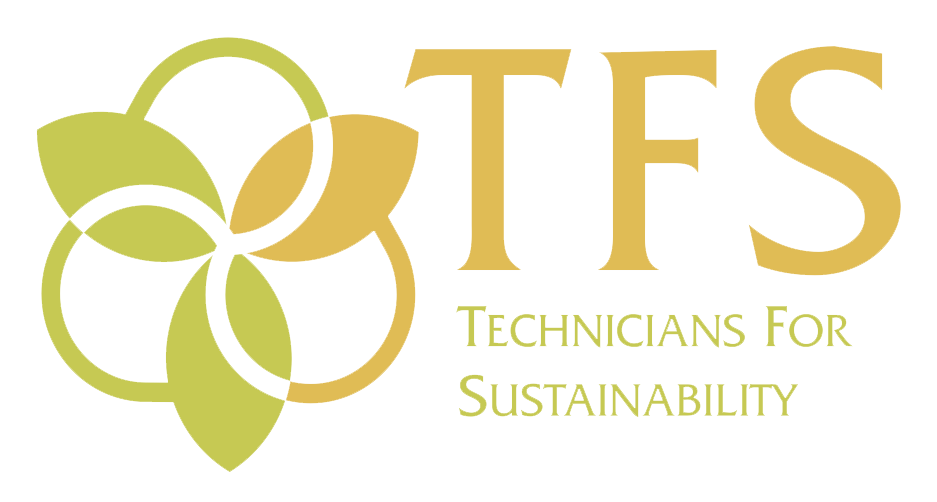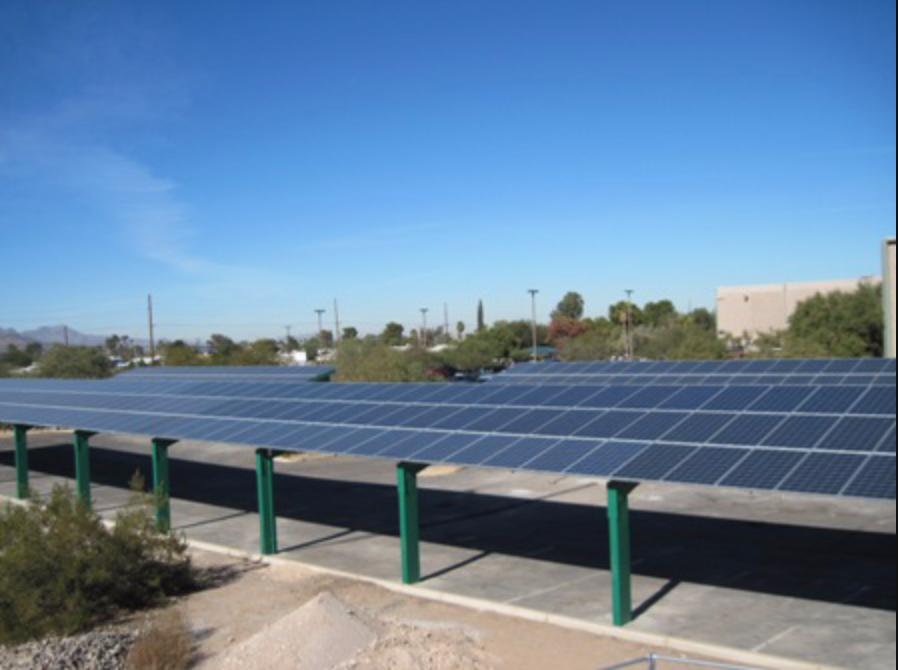The Nature Conservancy has added solar to its sustainable Tucson campus. The 92 kW solar electric (photovoltaic) system will supply 93% of the building's power. The organization's hope is that it will educate and inspire businesses, particularly nonprofits, to adopt sustainable practices.
Solar Details The Conservancy’s newest photovoltaic (PV) system is made up of 293 solar panels -- 53 solar panels on the roof of the main building and 240 solar panels on a solar parking shade structure, with 18 roof-mounted panels from an earlier installation. The 4,200-square-foot photovoltaic array has three primary functions -- shading 14 parking spots, electricity generation, and serving as a rainwater harvesting catchment area.
The primary goal for The Nature Conservancy was to provide as close to 100% as possible from renewables, without taking over the site, which they would really like to use as a demonstration of xeriscape, water harvesting, and sustainable electricity generation -- all things The Nature Conservancy stands for.
Rainwater Harvesting Rain that falls on the solar parking structure will be directed into a "mega-cistern," made of modular "milk-crates" of recycled material wrapped in impermeable plastic buried beneath the driveway. That 30,000-gallon reservoir was installed in 2011, according to the Jim Cook, former Executive Director at The Nature Conservancy. The reservoir will be less visible than the existing "iconic" 18-foot cistern, which was also installed by TFS, that collects roof water for native plants around the main building. With every inch of rainfall, the solar parking structure will harvest over 2,530 gallons of water. The additional storage will supply water for the entire 2.35-acre campus.
Financial Factors In regard to funding these types of solar projects, non-profits are often left out of the solar game, because they can't take advantage of the available tax credits. However, the funding for The Nature Conservancy’s system came from a $130,000 donation that was parlayed into a $542,000 PV system. The non-profit worked with a financial partner who was able to use the tax credits and accelerated depreciation schedules that are available for solar projects. Using a lease-purchase agreement allowed the conservancy to add panels and upgrade their efficiency - all for a monthly payment that is less than their current electric bill.








































